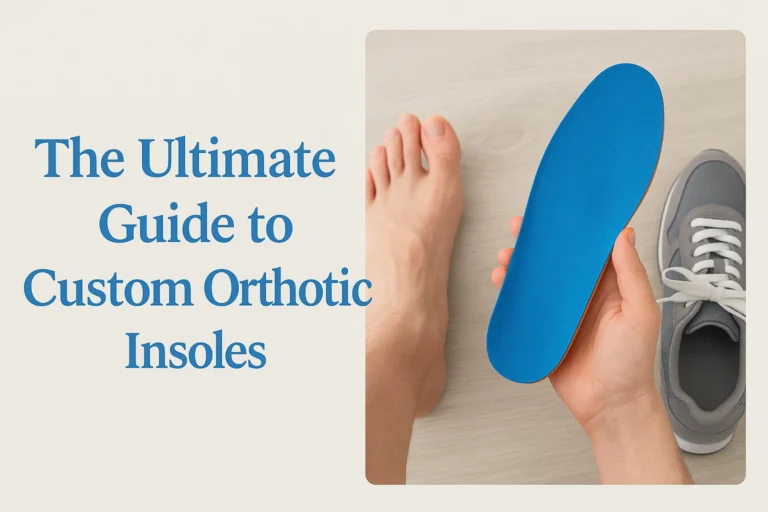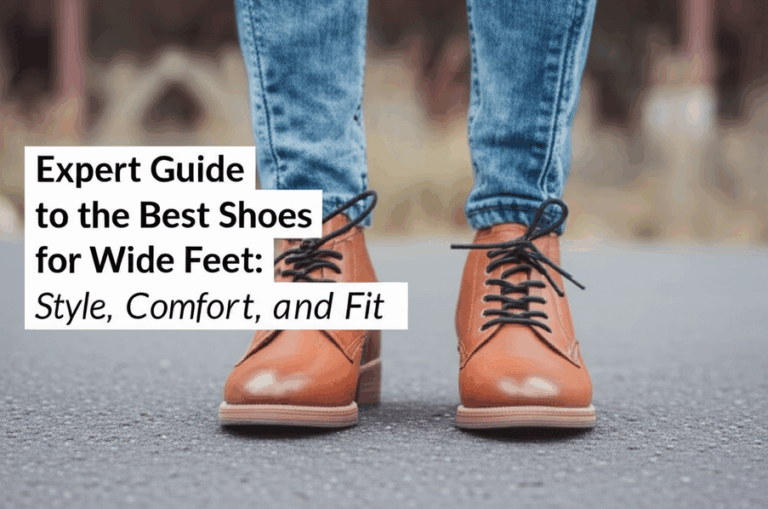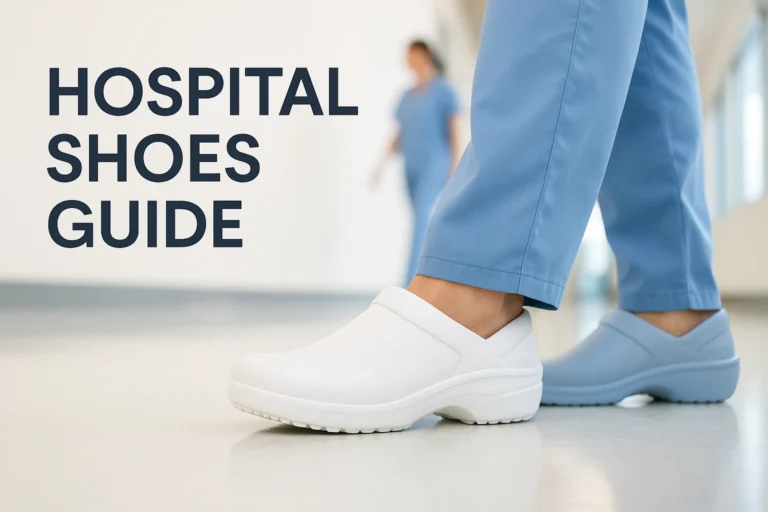What Does PS Mean In Shoes? Choose Sneakers With Kids Size
If you’re thinking about getting a good pair of shoes and feel mixed up when you see “PS”, you’re not the only one! A lot of people don’t get what this PS word means or how it connects to shoes.
When you buy sneakers at shops or online, you come across the terminology “PS” a couple of times: in the product description, the shoes’ box, the size chart, while talking to salespeople, etc. So what does PS mean in shoes? We’re here to help you understand everything you need to know about PS shoes, so your next buy is perfect for your feet. We’ll explain how to read shoe size charts and what PS ratings mean. We’ve got it all sorted for you.
PS isn’t a set size, because kids who are three and kids who are five often don’t wear the same size. In the U.S., Preschool sizes usually go from six and a half to eight and a half inches. Some shoe brands might have slightly different sizes, but this is the usual range most people use.
What Does PS Mean In Shoes?
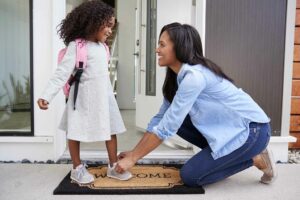 In our exploration of shoe sizing for children, “PS” stands for “Pre-School.” This term indicates that the shoes are designed for kids aged three to five years old. However, it’s important to understand that PS sizes are not universal across all sneakers; they differ by brand, country, gender, and other factors, leading to some challenges in selecting the correct PS size for our kids.
In our exploration of shoe sizing for children, “PS” stands for “Pre-School.” This term indicates that the shoes are designed for kids aged three to five years old. However, it’s important to understand that PS sizes are not universal across all sneakers; they differ by brand, country, gender, and other factors, leading to some challenges in selecting the correct PS size for our kids.
In this age group, the average foot length ranges from 6-½ to 8-⅜ inches. This measurement can vary depending on the individual child’s foot size and gender, which we will delve into later.
We must remember that children’s feet grow rapidly during these early years. Specifically, kids aged 1-3 years old experience foot growth of approximately 1.5 mm each month. Beyond this, from ages 3-6, their feet can grow by about 1 mm per month.
According to the National Library of Medicine, children from 2-6 years old typically need a shoe size change every 1-2 months. This frequency is due to slight variations in PS sizing across different shoe brands. Therefore, we recommend checking the size charts of specific manufacturers carefully.
For some brands, PS represents the smallest size category, suitable for kids under three years old. However, most brands offer smaller sizes than PS, namely TD (Toddler) and BC (Baby Crib), both of which are designed for very young children.
When our children’s feet grow beyond 8-⅜ inches, they transition into the GS (Grade School) size category. GS is the ideal size for children over six years old who have outgrown the PS size. In cases where the GS designation is not used, you might encounter GG (Girl Grade School) or BG (Boy Grade School), which serve the same purpose as GS shoes but are gender-specific.
What Are PS Size Chart For Children?
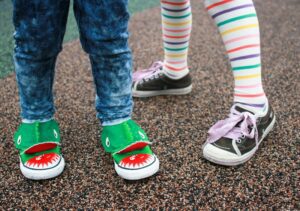
You might already know this, but shoe sizes differ by region because the average sizes of people are not the same there, or those regions also use a range of sizes measurements, indicating that preschool shoe sizes in the US have different dimensions from those in the UK or the EU.
You had better refer to our kids’ size charts to pick the correct size for your sweethearts.
| Heel-to-toe Length (inches) |
Heel-to-toe Length (cm) |
Size for EU Kids | Size for US Kids | Size for UK Kids |
|---|---|---|---|---|
| 6.49 | 16.5 | 27 | 10C | 9.5 |
| 6.75 | 17.2 | 27.5 | 10.5C | 10 |
| 6.9 | 17.6 | 28 | 11C | 10.5 |
| 7.1 | 18 | 28.5 | 11.5C | 11 |
| 7.25 | 18.4 | 29.5 | 12C | 11.5 |
| 7.4 | 18.8 | 30 | 12.5C | 12 |
| 7.6 | 19.3 | 31 | 13C | 12.5 |
| 7.75 | 19.7 | 31.5 | 13.5C | 13 |
| 7.9 | 20.1 | 32 | 1Y | 13.5 |
| 8.1 | 20.5 | 33 | 1.5Y | 1 |
| 8.25 | 20.9 | 33.5 | 2Y | 1.5 |
| 8.46 | 21.5 | 34 | 2.5Y | 2 |
| 8.6 | 21.8 | 35 | 3Y | 2.5 |
What Are The Essential Tools to Measure Your Child’s Feet?
Are you wanting to measure your children’s feet to choose suitable shoes? you need to make sure you’re getting a pair of shoes that fit properly, it’s important to get an accurate measurement of your child’s feet. To get the right shoe size for your child, you’ll need to measure their feet correctly. Here’s what we use:
- A pencil and paper: We write down the foot measurements to keep them accurate.
- A measuring tape: We use this to find out how long your child’s feet are in inches or centimeters.
- An inch ruler: This helps us measure how wide your child’s feet are and check if one foot is bigger than the other.
- A marker: We use this to mark the shoe size that fits your child best.
How Do You Measure Your Child’s Feet?

Measuring our child’s feet can be quite a challenge, especially when they struggle to stay still for even a few minutes. For instance, when I attempted to measure my niece’s feet to buy her birthday shoes, she was bouncing around, making it nearly impossible. Follow our steps to make it easy:
1. Measure Your Foot Length
First, you need to put a blank piece of paper on a flat surface near a wall. If it moves around, stick it to the floor with tape.
Next, have your child stand on the paper, their heel touching the wall. They should stand up straight and put equal weight on both feet. While they stand, use a pencil to draw a line at the tip of their longest toe. You might need to get down low to see it right.
Remember, it’s normal for one foot to be a bit bigger than the other. So, do the same thing for the other foot.
After you mark the furthest point for each foot, take the paper off the floor. Measure from the edge closest to the wall to your mark. You can use a ruler or a measuring tape. Write down the sizes in centimeters or inches to remember.
2. Measuring the Foot Width
- In our method of measuring foot width, we start by positioning the foot on a flat surface, ensuring it bears the full weight of the body. This step is critical for an accurate measurement.
- We then use a flexible measuring tape, carefully wrapping it around the widest part of the foot. This is usually across the bunion joints.
- We need to ensure the tape is snug but not overly tight. This allows us to get a precise measurement without compressing the foot.
- Our technique takes into account the unique variations in foot shape and size, recognizing the individuality of each person’s feet.
Finally, we use this measurement to determine the appropriate shoe width for optimal comfort and support, ranging from narrow to extra-wide sizes.
Note: To measure the foot, add about half an inch (or 1 to 1.5 cm) extra. This gives space for growth and lets the toes move easily.
3. Use The Foot Sizing Guide
Most brands provide a size chart that matches foot length and width to their specific sizes. By using our child’s foot measurements and referring to the brand-specific sizing chart, we can find the most accurate size for them. It’s important to remember that size conversions may vary between brands.
By meticulously following these steps, we’ll gain a clear understanding of our child’s shoe size, simplifying the process of shopping for new shoes, whether it’s done in-store or online.
What Are Tips to Measure Your Kids’ Shoe Sizes?
Measure feet in the afternoon or evening
Whether they are adults‘ or kids’ feet, they are the smallest and truest to the actual size in the morning while swelling to a bigger size in the afternoon and the evening.
The size difference is not much for kids because they only walk or stand for a short time; thus, I recommend measuring your kids’ feet in the afternoon to get their average size.
Wear socks while you measure the kid’s feet
If you notice, kids usually wear socks, whether hot or cold, as the socks allow kids to get hyper and secure against boo-boos such as cuts, slipping, or blisters.
When measuring their feet’ dimensions, you should also have your kid put on socks before taking the measurement, but ensure the socks are neither too thick nor thin.
Spare extra room for growth
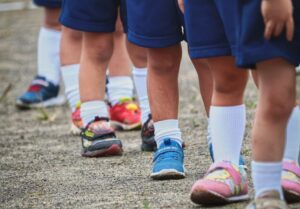
Preschoolers can grow in spurts. It is wise to leave between 1 to 1.5 centimeters (according to the development rate of kids’ feet I mentioned in part 1) to the actual length of feet for the kid’s growth and wriggle fit around; or, if your kids are bigger than average and growing fast, you can consider half-size larger ones.
Then, it is recommended to measure once every 1-2 months to check the foot’s growth.
Measure both feet
The left and right feet of your kids might have different lengths, so you have to measure both feet and consider the longer ones while choosing shoes or footwear.
Allow your kids to jump and walk while wearing shoes.
Once you find the best shoes with the correct size, have your kids try the footwear on and ask them to jump and walk with the footwear to ensure the size comfortably fits.
Sneaker Terminology Explained
Besides PS, there are numerous other abbreviations that could be helpful in selecting the right shoe size for our children. It’s important to note, however, that many of these shoe terminologies are predominantly used by Nike and are tailored for kids. Here are some of the most common abbreviations and their meanings:
- TD means Toddler
- PS equals Preschool
- GS stands for Grade School
- GG denotes Girl Grade School
- BG represents Boy Grade School
- BC indicates Baby Crib.
What Are Common Mistakes to Avoid When Buying “PS” Sized Shoes?
As experts in the field of sound, we understand the importance of attention to detail, which is equally vital when purchasing “PS” (Preschool) sized shoes for children.
One common mistake to avoid is neglecting to regularly measure our children’s feet. Kids’ feet grow quickly, and relying on past sizes can lead to buying shoes that are too small or too large.
Another oversight is not accounting for different sizing standards across brands. It’s crucial to refer to each brand’s specific size chart, as a size in one brand may differ from another. Additionally, we should avoid choosing style over comfort and fit.
While trendy designs are appealing, the primary focus should be on shoes that support healthy foot development and provide sufficient comfort for active preschoolers.
Lastly, not considering the width of the child’s foot is a mistake; some children require wider shoes for optimal comfort. By avoiding these common pitfalls, we can ensure a more suitable and comfortable shoe choice for our children.
Conclusion
In summary, from our perspective as sound experts who value precision, “PS” in shoe sizing is crucial for ensuring the right fit for preschool-aged children. This term stands for “Preschool Size,” and it’s specifically designed for kids aged 4 to 7. Just as we tailor sound frequencies for specific needs, understanding and using the PS size accurately is essential in providing the necessary support, comfort, and space for growth in children’s footwear. It’s about creating a harmonious balance between fit and functionality, ensuring that our young ones are equipped with shoes that suit their developmental stage and active lifestyle.
For a clearer tutorial on measuring the feet length of your little one, check out this video:
Related posts:
- What Does SE Mean In Shoes? Sneakerheads Must Know
- What Does UA Mean In Shoes? – Authenticity Revelations
FAQs
GS and PS: What Is The Difference?
GS denotes Grade School shoes which are good for kids attending grades whose shoe sizes are between 3.5Y to 7Y in the US or 3 and 6.5 in the UK, whereas PS is known as Preschool shoes, smaller than GS shoes, which are from 10C to 3Y in the US or 2.5 to 9.5 in the UK.
Why Are There C and Y in Size Charts?
The letter C indicates Child; meanwhile, Y stands for Youth.


